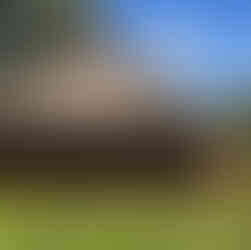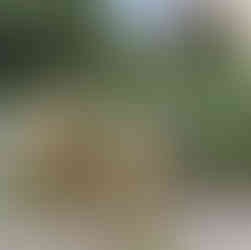Meet the Podlasie Makers
- Katharine Ricks

- Aug 26
- 5 min read
It's several weeks since I returned from my incredible trip to Poland and have finally found a moment to sit down and write about some of the highlights including what, for me, was the absolute highlight. This was meeting three extraordinary and inspiring artisans who continue to keep Polish traditional craftmanship alive.
My trip centred on the voivodeship (province or region) of Podlasie (pronounced Pod-laash-ee) in North-East Poland. Voivodeships have existed since medieval times and they're the equivalent of a duchy in western medieval times. Nowadays there are 16 voivodeships in Poland.
I travelled with a small group of fellow lovers of Polish folk-art led by the initimable Donatella and Stanislaw. We stayed in one of the beautiful buildings of the Father Krzystof Kluk Museum of Agriculture in Ciechanowiec. The museum is located within a palace and park complex (the former estate of the Starzeński family ) and includes a Classicist palace (rebuilt from war damage in 1966–1969), an outbuilding, stables, a coach house , a working watermill, and a forester's lodge . The ethnographic park (open-air museum) created within this complex houses 43 historic, wooden, architectural structures. These were relocated here from villages located on the Masovian - Podlasie border .
Each day we set off on an adventure to explore the many faces of Podlasie whose history is marked by partition, devastating wars and occupation by other nations including the Soviet Union whose influence is seen everywhere.
This has left areas where life is still lived in the old ways with little evidence of the technology we all take for granted.
We visited museums, orthodox churches and beautiful rural villages and learnt a huge amount about Polish history and culture. Here are just a few pics of the 100s I took!
We also went to a huge flea market which was a treasure trove of extraordinary things for sale. Thank god I took an extra suitcase! And saw storks galore in their precarious nests plus a much larger bird who unexpectedly popped out to say hello!
And then onto the traditional folk art of Podlasie. We were lucky enough to take part in three workshops and to have a go ourselves: wycinanki - the Polish folk art of paper-cut decorations and and collages, pisanki - decorating eggs using wax and dye and krajka - weaving strips of cloth.
But the best part of the trip was meeting three extraordinary folk artists from the Podlasie region. Each one welcomed us into their homes and delighted in showing us their craft. I feel so lucky to have met them all and to have caught a glimpse of their world.
First we travelled to meet Dionizy Purta one of Poland's renowned folk wood sculptors. He was born in 1941 in the village of Lewonie in Podlasie. Throughout his working life he dabbled in manual crafts but worked in industries like blacksmithing and coal mining. Finally after retiring in 1980 that he devoted himself fully to sculpting.
His work spans a rich diversity of subjects: chapels, religious figures, village scenes, musicians, and whimsical birds and are instantly recognisable. . These are often assembled from branches, roots, boards, and carved fragments and are geometrically simple, bold and vividly coloured. I loved them and was able to bring back two of his very distinctive birds to sell in the shop and online. Here they are and a treasured picture of me sitting next to him in his flat.
Just as we were leaving I spotted a hilarious-looking folk dog made of scorched-looking wood sitting on Purta's dresser. It looked like Black Shuck - the infamous legendary devil dog of Bungay. I just had to have him for my window display during the Black Shuck Festival https://blackshuckfestival.com/ Here he is in my window pimped with flames and red eyes but still looking like he wants to go walkies!

Our next visit was to meet Anna in her small-holding home in a village in the North-East of Podlasie. Anna is a weaver and embroiderer and specialises in making tapestries which can be made into cushions and wall-hangings.

She was 14 when, with the support of her mother, she began weaving. Initially, she made woollen blankets and then moved on to weaving rugs. She built her own looms, which still stand in her home today and we were treated to a demonstration while we were there.
Today, Anna is known primarily for her charming embroidered wall hangings, known as makatka (plural -makatki), which she sews on hand-woven linen canvas. This base fabric was originally woven on her looms to be used as grain sacks. As the fabric is peppered with small holes she cuts it into small pieces and then embroiders these with the most lovely, colourful scenes depicting various animals, birds (especially Polish storks) and also her village life. She had laid out a collection of these for us to buy on two trestle tables and I could've bought them all! But controlled myself and bought just eight. I've kept two for myself and the rest are listed on my website although only three are left now! I am ordering some more in time for Christmas hopefully.

The family tradition is continued by her daughter and granddaughter who were also there to greet us and show us around as well as ply us with a feast of gherkins and a pyramid of pork sandwiches. It was such a wonderful day.

Last , but by no means least, we travelled to meet Michał Koc, another wood sculptor from a town right next to the Polish border with Belarus. He was interested in wood from a young age and used to go to the forest to collect roots and carve them into candlesticks. But he spent his working life as a locksmith and a welder until this began to impact his health so he went part-time. Using his skills he began to make tools for wood-carving so that after he retired he could devote his time to this craft.
He started by carving heads and once he perfected these he began to make complete figures. For many years he took part in local art festivals but eventually these led to him selling worldwide and also winning many awards. Many of his sculptures tell stories of the life along the Polish - Belarussian border especially that of the Belarussian minority in Poland and local village life. His sculptures were dotted around in his amazing market garden as well as there being many for sale in his studio.
His figures often have a religious theme in which both Catholic and Orthodox elements co-exist. They're finished in bright colourful wood-stains which he mixes himself. Here are the four, slightly crazy-looking angels I somehow managed to squeeze into my suitcase. All for sale in my shop and online.
It was such a great privilege to meet these three legendary folk artists who represent a time gone by in Poland but who are also still keeping their traditional crafts alive. For example Anna passing on her skills to her daughter and grand-daughter as her own mother did to her.
For each of them their craft is clearly a great passion which is summed up by these two quotes:
Dionizy Purta - "When I am not carving, I am sick"
Michał Koc - "Every day without a chisel is a wasted day for me"
Their work epitomizes the simple tradition and beauty of folk art - made for the people by the people. Read my other tale "What is Folk Art and Why Does it Matter" for more on this.
I can't wait to go back to Poland! In the meantime I am very excited as am off to Transylvania in three weeks time! So watch this space for my next tale from there.






























































